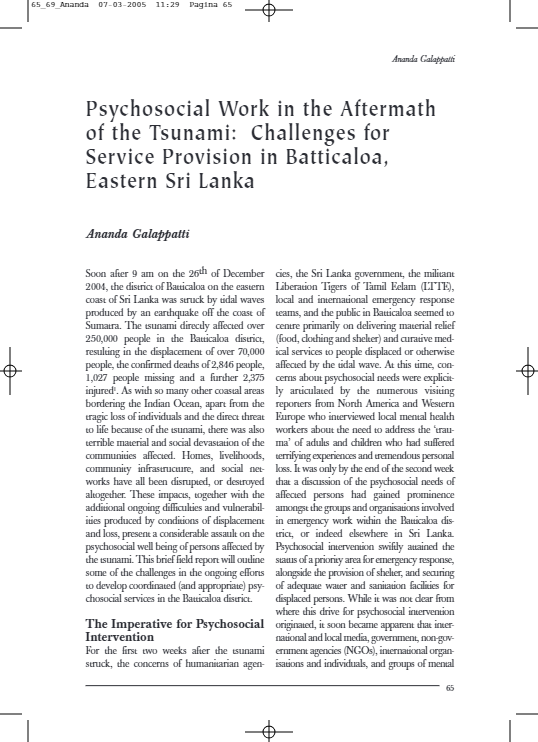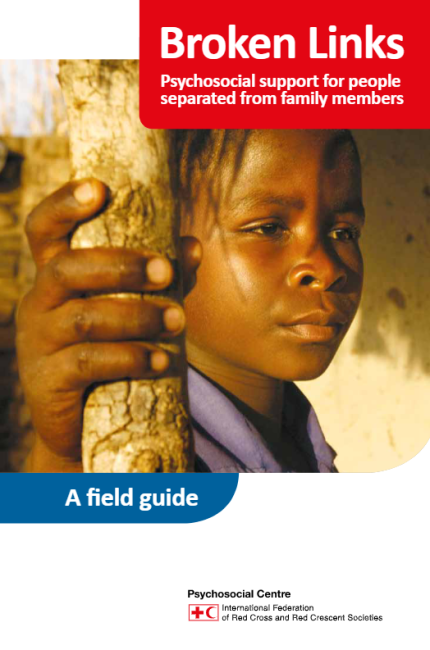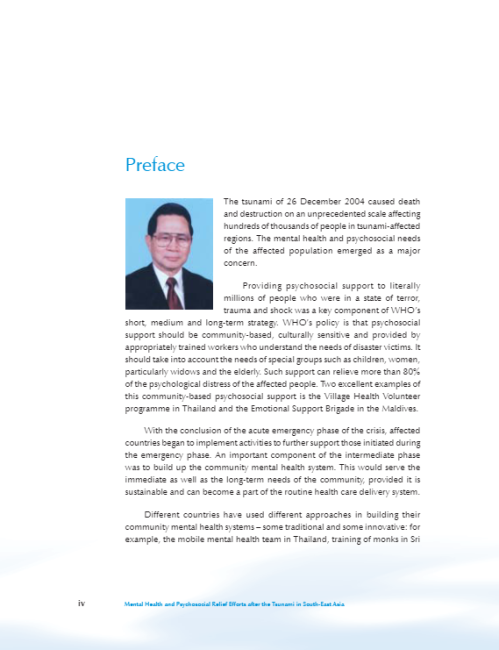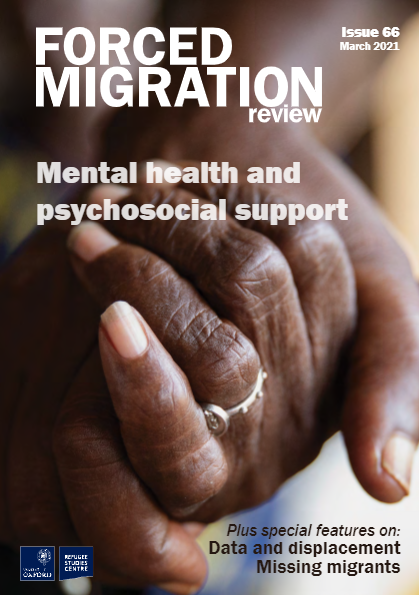
Psychosocial Work in the Aftermath of the Tsunami: Challenges for Service Provision in Batticaloa, Eastern Sri Lanka
Soon after 9 am on the 26th of December 2004, the district of Batticaloa on the eastern coast of Sri Lanka was struck by tidal waves produced by an earthquake off the coast of Sumatra. The tsunami directly affected over 250,000 people in the Batticaloa district, resulting in the displacement of over 70,000 people, the confirmed deaths of 2,846 people, 1,027 people missing and a further 2,375 injured. As with so many other coastal areas bordering the Indian Ocean, apart from the tragic loss of individuals and the direct threat to life because of the tsunami, there was also terrible material and social devastation of the communities affected. Homes, livelihoods, community infrastructure, and social networks have all been disrupted, or destroyed altogether. These impacts, together with the additional ongoing difficulties and vulnerabilities produced by conditions of displacement and loss, present a considerable assault on the psychosocial well being of persons affected by the tsunami. This brief field report will outline some of the challenges in the ongoing efforts to develop coordinated (and appropriate) psychosocial services in the Batticaloa district.







